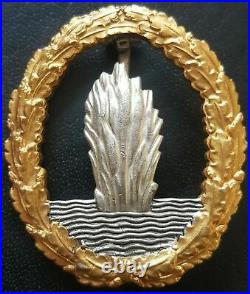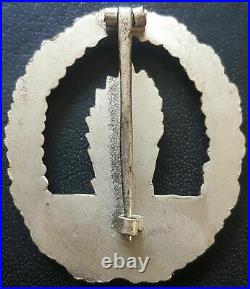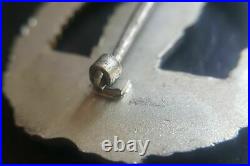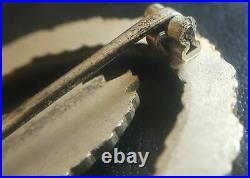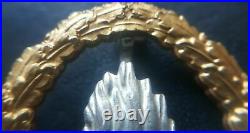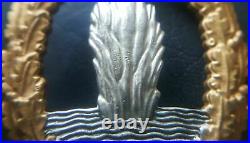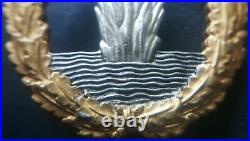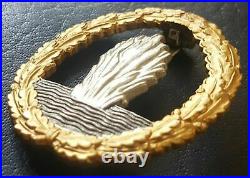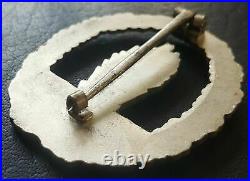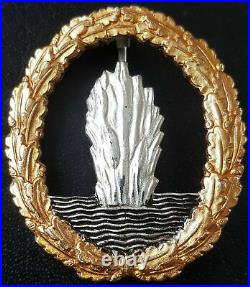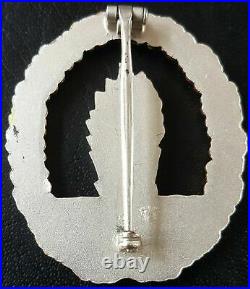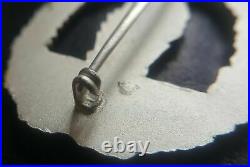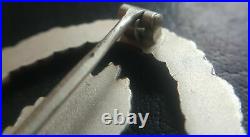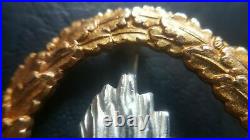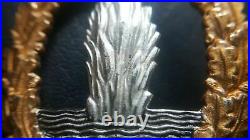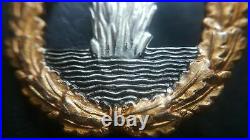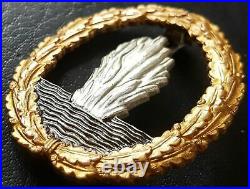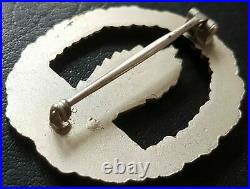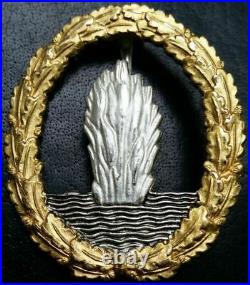
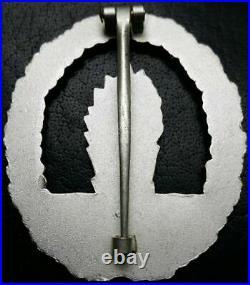
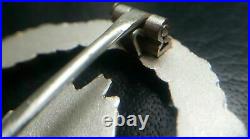
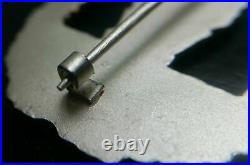
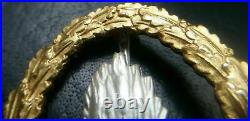
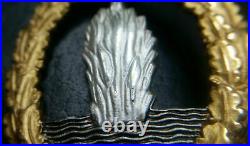
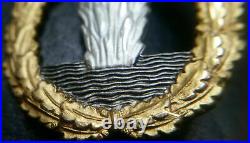
Original German Wehrmacht Heer Minesweeper War Badge post WW2 – 1957 pattern – no swastika, PERFECT CONDITION, very nice genuine Steinhauer & Lueck example, perfect pin device, most likely late 60′s or early 70′s, nice badge. In 1957 the West German government authorised replacement Iron Crosses with an Oak Leaf Cluster in place of the swastika, similar to the Iron Crosses of 1813, 1870, and 1914, which could be worn by World War II Iron Cross recipients. The 1957 law also authorised de-Nazified versions of most other World War II-era decorations (except those specifically associated with Nazi Party organizations, such as SS Long Service medals, or with the expansion of the German Reich, such as the medals for the annexation of Austria, the Sudetenland, and the Memel region). The main government contract to manufacture and supply these new de-nazified WW2 1957 official decorations went to the world famous German firm Steinhauer & Lueck, Luedenscheid Germany. Knights Crosses, Iron Crosses, Wound Badges, Tank Assault Badges etc were re-designed by Steinhauer & Lück – often with the oak-leaf spray replacing the swastika, with S&L having the sole patent rights to all WW2 1957 German decorations. S&L did not have the whole monopoly on medal making, other famous firms such as Deschler & Sohn, BH Maher and Juncker also manufactured these new German decorations. Lüdenscheid is situated between the cities Dortmund and Bonn. It was here that one of the youngest medal firms was founded in 1889 by August Steinhauer and Gustav Adolf Lück. The first production began in a cellar, the customer base continued to increase. A property was bought at 51 Hochstrasse which is still home for this famous company today. During WW2 Steinhauer & Lück produced medals and badges, like the famous Knights Cross and many other types of medals and badges. In 1957 this company was awarded the contract to produce all the newly re-designed legal WW2 1957 de-nazified decorations, plus the contract to manufacture all of Germany’s official decorations including Germany’s highest order the Bundesverdienstkreuz. Only a very limited number of original WW2 1957 medals are still produced, mainly Iron Crosses, German Cross Gold & Silver & Wound Badges and are considered 100% genuine by the German Government. HISTORY OF THE AWARD. The Minesweeper Badge was designed by sculptor Otto Placzek of Berlin and featured a large silver water funnel in the center of the badge. A gold wreath of oak leaves surrounds the water funnel with the national emblem at the top, wings outspread clutching a swastika. Examples of the Minesweeper Badge can be found in both tombak and zinc. It is not uncommon for zinc examples to lose their finish overtime, which results in a dull gray appearance. Pin attachment style varied by maker but examples can be found in both vertical and horizontal configurations. T he premier maker of Minesweeper Badge’s was Schwerin, Berlin. The badge was presented with an award document and worn on the left breast. Miniature versions in both 9 & 16 millimeter were authorized for wear on civilian clothing. The following requirements were necessary to receive the badge: Participation in three operational engagements. Excellence for performance over a six month period (if other criteria not met). This item is in the category “Collectables\Militaria\World War II (1939-1945)\Medals/ Ribbons”. The seller is “a..anderson” and is located in this country: GB. This item can be shipped worldwide.
- Era: 1945-Present
- Country/ Organization: Germany
- Country/Region of Manufacture: Germany
- Theme: Militaria
- Conflict: World War II (1939-1945)
- Service: Army
- Type: Medals & Ribbons
